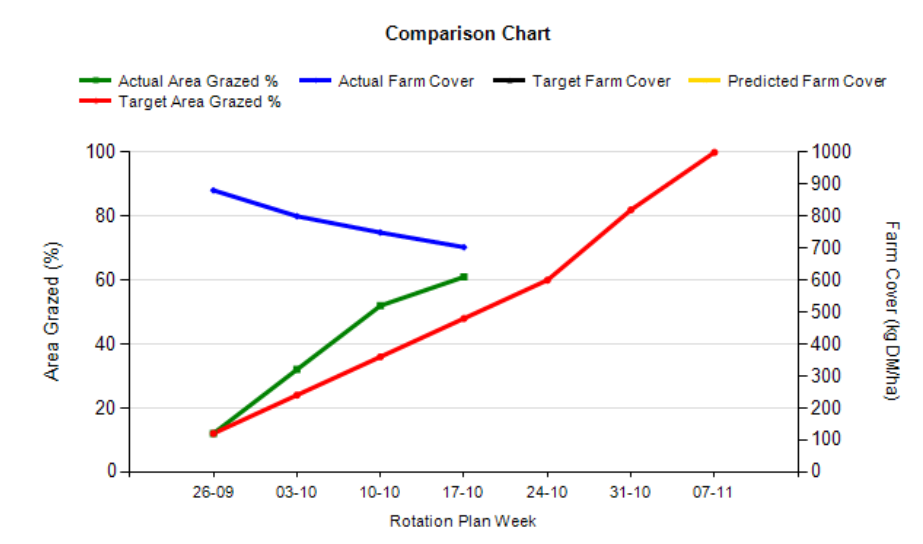Animal Health
The bulls are all weaned and the heifers are in progress. Ger used the nose paddles this year which were put into the calves’ noses for 6-7 days. They were fed hay out at grass and got 1kg of ration/head/day up until weaning. They were creep grazing ahead of the cows on the best grass all summer as well.
Work in Teagasc, Grange and across the world has shown a 20kg difference in carcass weight of 650 – 700kg for steers housed from 2 – 3m2. The lying and feeding space calculations were completed for the bull shed and the heifer shed on Ger’s farm. The pens in the bull’s slatted shed are 4.4m x 4.95m. At a lying space of 2.7m2/finishing bull there is sufficient space for 8 cattle. However the feeding space is the most limiting factor in the pens and at a feed space requirement of 0.65m/head, the pen should only have 7 bulls in it. Ger has 3 of these bays and 17 bulls to house so there will be more than enough lying and feed space for them at 5-6 bulls per pen.
Each pen in the heifer shed is 14.2m x 4.4m and it is a straw bedded shed. The weanling heifers require 2.7m2 lying space in a straw bedded shed and this would allow sufficient space for 23 weanlings. However they need 0.5m of feed space and due to the width of the shed there is only enough space for 8 weanlings. Ger is aware of this and simply adds in an extra feeding are at the back of the shed to allow for this. Each pen will hold 8-9 weanlings so this allows sufficient lying and feeding space for the priority young stock on Ger’s farm.
Good ventilation happens when enough clean air moves through the shed to remove gasses, odours, dust and bacteria. It should also remove the moisture and heat generated by the animals. To be effective it needs to work on calm days. Fresh air is actually a disinfectant, if a virus is coughed up in a building, it will last for 20 hours. However, if the same virus is coughed up outside in fresh air, it will last for about 20 minutes. Air actually deactivates the virus, so we need to make the maximum use of fresh air in sheds. The ‘stack effect’ is a ventilation method and is driven by the heat produced by the animals and by the roof slope. The animals produce heat and warm the air. The warm air rises following the slope of the roof, escaping through the outlet (highest point of the house) and is replaced by clean fresh air via the inlet.
The ventilation inlets and outlets were calculated for both sheds on the farm, which is computed based on the average animal weight, the number of animals to be housed, the total shed floor area and two charts (to get the ventilation outlet area and the height factor). The air inlets should be double the air outlets.
The bull shed had more than enough air inlets (windows) and outlets (raised sheeting, doorway and high windows) for the number of finishing bulls being housed there. The heifer shed had sufficient inlets for air (above the feed barrier and through the roller door) but not enough of an air outlet in the slits cut into the sheeting on the side of shed. This can be rectified by adding two slits in the sheeting of 1m x 0.5m.





